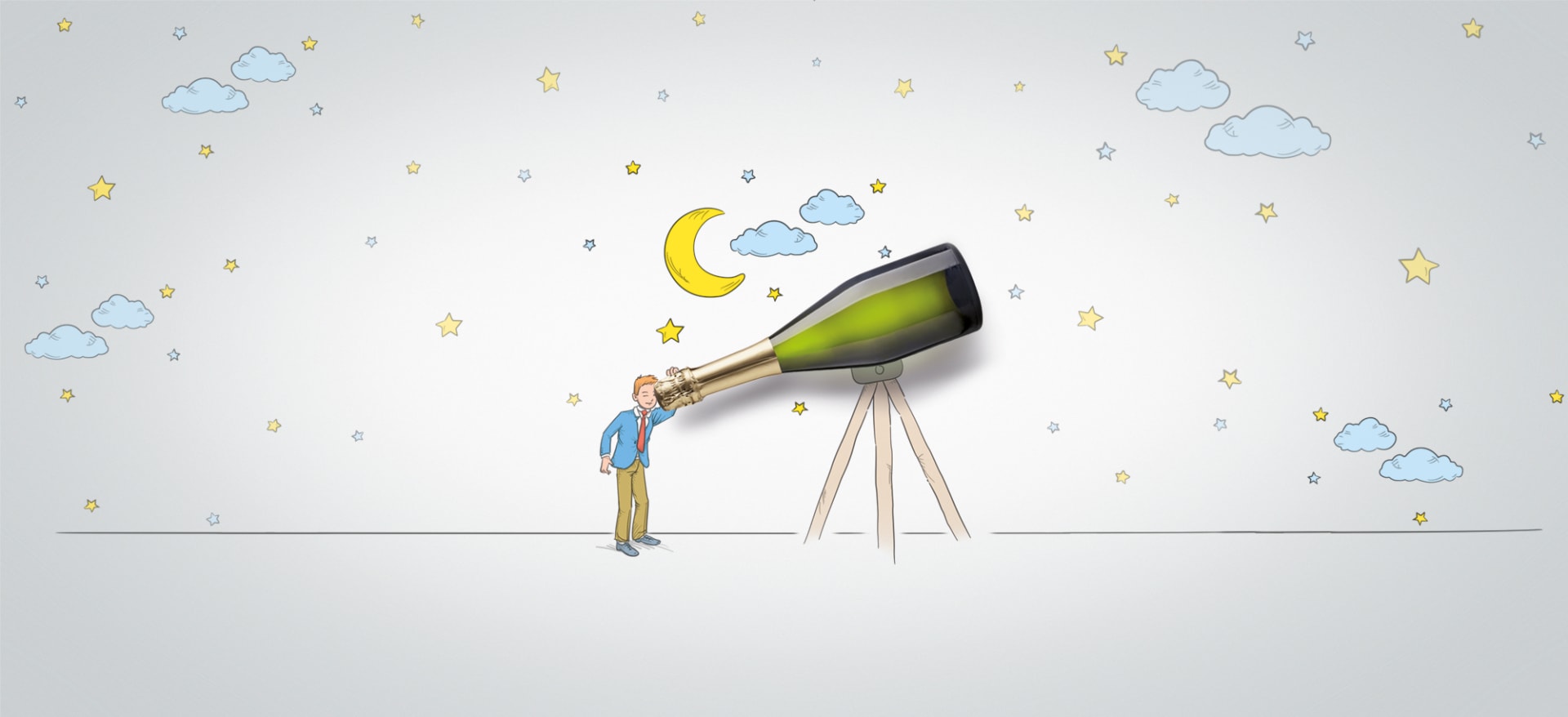AEB GUIDES YOU THROUGH THE WORLD OF SPARKLING WINES
Due to the know-how and experience gained in the spumante sector, we are able to offer a comprehensive range dedicated to spumante making, both for the classic and Charmat methods, that includes biotechnologies, process aids and equipment.
We are well aware of the commitment and dedication that it takes to harvest the grapes under the best possible conditions. That's why we are committed to providing specialised support alongside a range of products that make the most of all the winemakers' efforts, with the aim of producing high quality spumantes.
SPUMANTE VINIFICATION
Knowing the precise moment to pick is one of the most important decisions, as this choice will be responsible for the perception of the acid/sugar balance and phenolic and aromatic maturity. On the other hand, the harvesting method directly influences the mashing; in this respect, picking by hand remains the ideal choice for producing high quality Spumantes. Therefore, the design of a Spumante must take into account, the final objective to be achieved, right from the harvest.
Our complete range, which includes biotechnology and equipment, guides the winemaker through all stages of the process. To support the production of the base wine (or vin clair), we provide process technologies to manage the pressing and clarification of the must and wine. In order to achieve these objectives, we propose enzymatic preparations, clarifiers, adjuvants, tannins and antioxidants capable of preserving the most important fractions of must and improving its qualitative parameters.
OUTSTANDING CLARIFICATION VERY QUICKLY
ALCOHOLIC FERMENTATION WITH SELECTED YEASTS
MANAGING ACIDITY, PH AND MALOLACTIC FERMENTATION
The acidity of a Spumante is defined by the organic acids present in the wine: tartaric, citric, malic, lactic and carbonic acids. It can be managed with products to replenish the lack of acid framework or for deacidification. In addition to a full range of lactic bacteria, we have specific yeasts that can decrease malic acid without producing lactic acid.
In the production of spumantes, pH is a key factor as it influences important quality parameters such as microbiological stability, tannin/protein reactivity, colour stability, oxidability and the balance between free and molecular SO2. To manage this important parameter, we offer the Stabymatic range, automatic cation exchange plants for pH lowering and tartaric stability.
PREPARING THE WINE FOR FROTHING
SPECIFIC YEASTS AND EQUIPMENT FOR SECOND FERMENTATION
Each spumante is the result of a well-defined project of which the fermentation technology is an integral part. After the second fermentation, depending on the pre-established technological objective, the wine may spend a period of maturation on the yeast lees, gaining greater complexity and specific aromatic notes. After refermentation, the dégorgement (disgorgement) operation follows, and in order to facilitate the removal of sediment and the clarification of the wine, we provide remuage aids in the range to optimise this stage of the process.
DEGORGEMENT AND PREPARATION OF THE LIQUEUR D'EXPEDITION
After disgorging (or degorgement), the liqueur d'expedition is prepared, an oenological practice designed to correct any imbalances and to further enhance the organoleptic profile of the wine before bottling. To this end, the offer includes additives and stabilising preparations, capable of reducing the perception of bitterness and giving roundness to the wine. The offer is completed with OAKIA, a selection of tannins able to improve the redox capacity, stabilise the colour and enrich the polyphenolic structure of the wine.


 CIDER
CIDER

 China
China
 United Kingdom
United Kingdom



